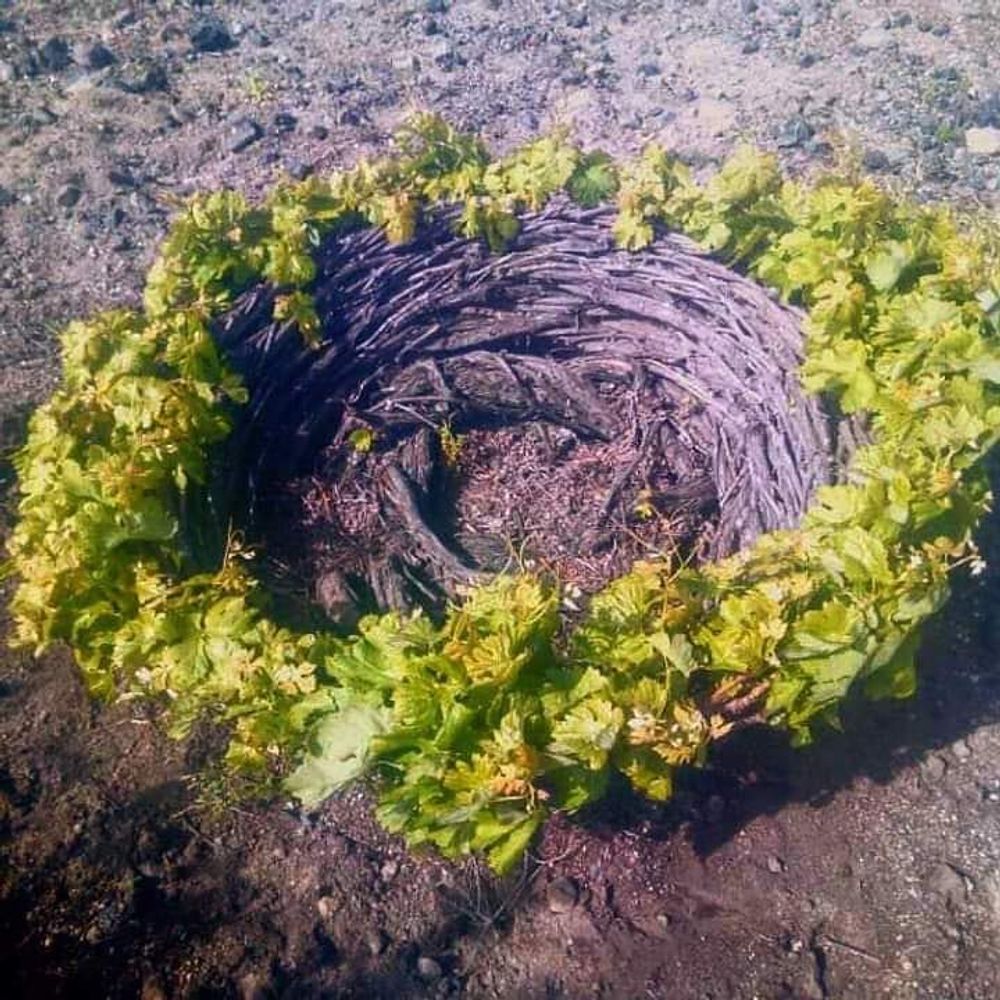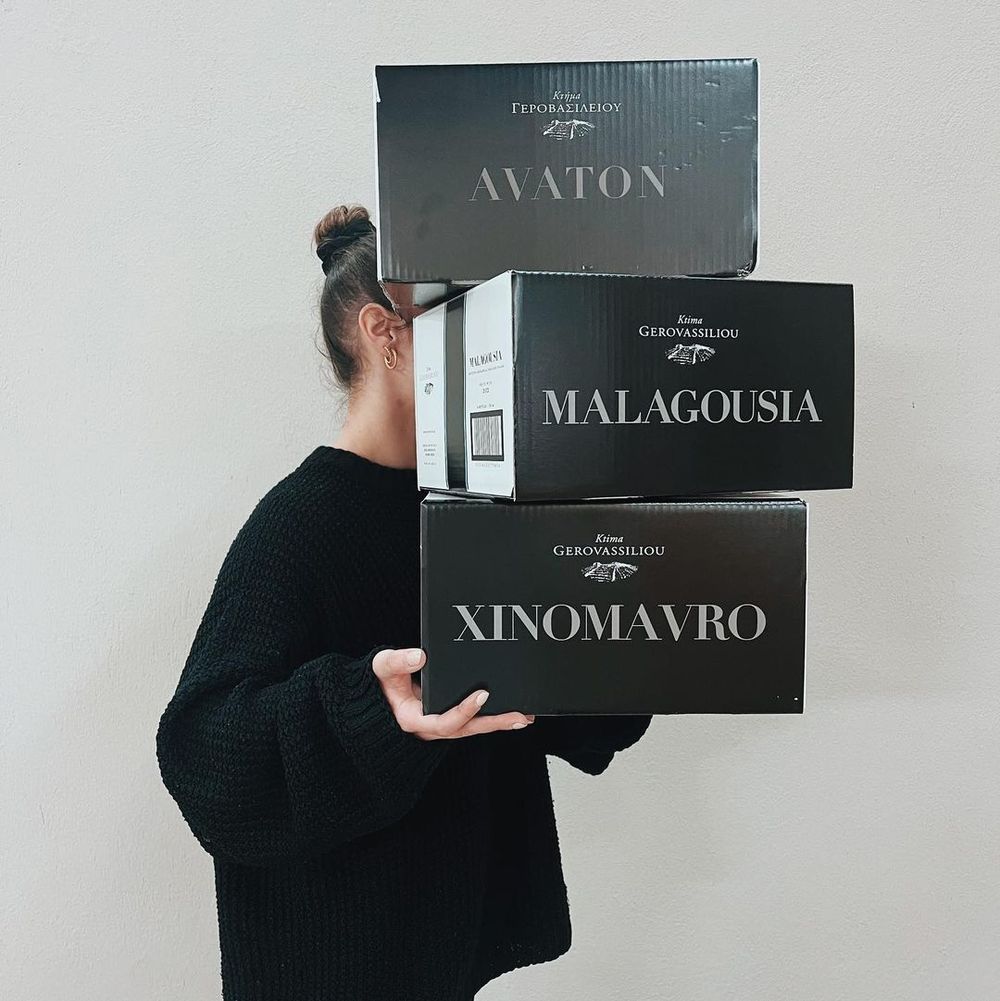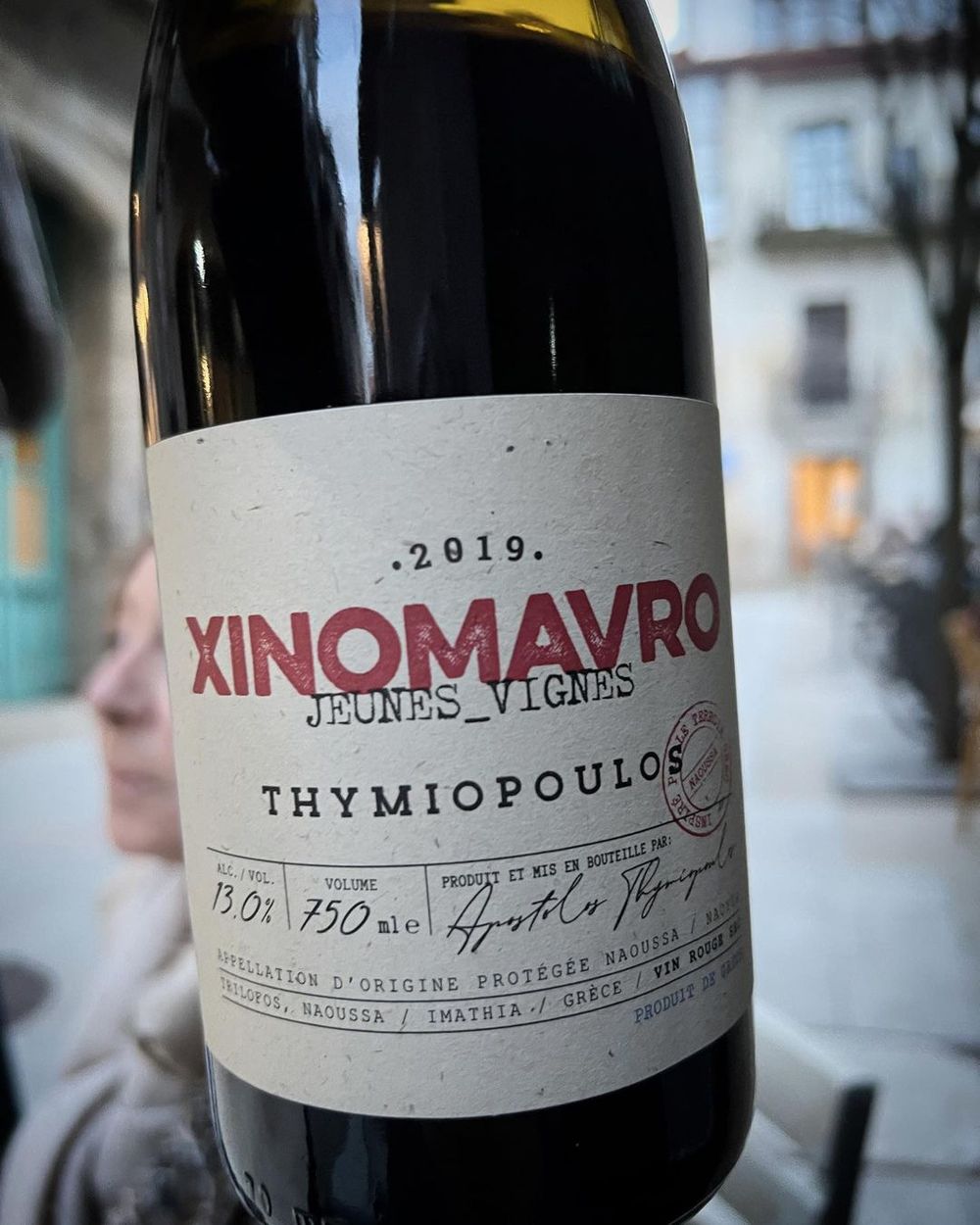“So, ever tried a Lesbian wine? Well, you should,” writes Justin Keay in his bluffers’ guide to Greek wine.

Kouloura is a vine pruning technique which protects Assyrtiko vines from strong sun and wind
Assyrtiko
Greece’s best-known variety has its natural home in Santorini. Undersupply – just 2.5m bottles are produced on the island each year – and growing popularity have pushed prices sky high but quality is better than ever. Terrasea 2020, the first wine to be made purely with grapes grown on the tiny island of Mikra Thira, which looks across the Caldera to the sunset village of Oia, shows rich saline complexity and fine acidity. (Cava Spiliadis). With Assyrtiko the undoubted jewel in Greece’s wine crown, plantings are increasing across Greece resulting in distinct but still delicious, textured wines. Try the award-winning, highly textured and expressive Akrathos Newlands Winery Assyrtiko 2019 from Halkidiki in northern Greece. (HN Wines).
Blends
Varietal wines still dominate Greek wine but we are seeing more and more blends of two or more varieties. In central Greece, winemakers are making modern, fresh wines from Savatiano and Roditis, Greece’s two most planted varieties and used to make Retsina. Elsewhere producers are blending international and native varieties and making great wines from a mixture of the latter – try Ktima Gerovassiliou’s Avaton 2020, a delicious blend of Limnio, Mavroudi and Mavrotragano. (HN Wines).
Crete
The largest island is home to some of the most exciting developments in Greek wine with producers working with a range of exciting local varieties including white Daphni, Thrapsathiri, Vidiano, Vilana and red Kotsiferi and Liatiko. Quantity and quality. Very much the place to watch.
Dodecanese
Rhodes and Kos are the two best known islands of the 12 that make up the Dodecanese near Turkey but their reputation for wine has hardly been great, with production at the first dominated by two long established companies which include wine amongst a range of other drinks, whilst winemaking on Kos all but died out. Things are changing though with new producers making wine from Athiri, Malagousia and red Mavrothiriko. Watch this space.
Evia
Greece’s second largest island is often overlooked because of its proximity to Athens and because it is connected by bridge to the mainland. In wine terms this is part of central Greece which is losing its former reputation for ‘meah’ wines. Producers are increasingly focused on quality with white varieties dominant.

Foivos is a great example of ambitious Greek wine production
Foivos
This is one of the most ambitious producers on the island of Cephalonia where the winery makes over 20 wines including several from the well-regarded local variety Robola of Cephalonia.
Gaia
Gaia is a key player in Greece’s viticultural renaissance. Established by Yiannis Paraskevopoulos and Leon Karatsalos, the winery takes its name from the Greek goddess of earth and life and is famous for its outstanding wines from Santorini and the Peloponnese. (HN Wines).
Heraklion
Crete’s bustling capital city, lies close to the centre of the island’s fast evolving wine industry and is home to five PDOs including Peza and Dafnes, with Dafni, Plyto, Viliana, Vidiano, Thrapsathiri, Liatiko and Mandilaria amongst the varieties grown. Producers to look for include Douloufakis, Lyrarakis and Idaia Winery.
Ios
This is another island slowly but surely building up its reputation for winemaking, with the white Monemvasia grape amongst those grown here. ‘Monemvasia grown in schist soil’ explains the remarkable flavours of Rematies, a wine made by the recently established Ios Winery. Just 1200 bottles of the 2021 vintage were made, showing island herbs, orange blossom and yellow peach. (HN Wines).
Jim
Jim Barry Wines from South Australia produced what was probably the world’s first non-Greek Assyrtiko back in 2015 after Peter Barry fell in love with the variety whilst on holiday with his wife in Greece nine years before. “I’d never tasted anything like it and thought – I’ve just got to try making this,” he told me a few years ago. A few vine cuttings provided by Gaia’s Yiannis Paraskevopoulos made Peter Barry’s dream become reality. Jim Barry’s Assyrtiko is now on the 2021 vintage and very nice it is too, showing salinity and the focused minerality you would expect of this variety.
Kir Yianni
The Kir Yianni estate was founded 25 years ago in Naossa by Yiannis Boutaris and the Xinomavro has become legendary from single vineyard Ramnista. Two years ago, Kir Yianni bought Sigalas, one of Santorini’s best-known producers. (Enotria&Coe /Great Wine Company).
Lesbos
So, ever tried a Lesbian wine? Well, you should, especially if it is made from the ancient variety Chidiriotiko famously revived by the producer Methymnaeos and made as a red, white and orange organic wine in sulphur-heavy soil near the Petrified Forest of Lesbos. Winemaking here dates back to the 7th Century BC and is undergoing a revival today, after being eclipsed for decades by Ouzo production (Southern Wine Roads)

Malagousia
Greece is big on M when it comes to varieties – Mavrotragano, Mavroudi, Mavro, Mandilaria and Moscofilero, to name just a few – but for me some of the most impressive wines right now are being made from Malagousia. Originating in northern Greece, this ancient variety almost became extinct before being rescued by Vangelis Gerovassiliou around 25 years ago. Other producers are making great examples but it seems only fair to reference Ktima Gerovassiliou’s delicious Malagousia 2020 – full on, with the texture of a fine Viognier but with good acidity to support things. (HN Wines)
Nemea
Found in the Peloponnese, Nemea is one of Greece’s most famous wine regions, renowned for its fruit-driven red Agiorgitiko and, increasingly, also its whites, notably floral Moschofilero.
Ouzo
Ouzo is made from grape must with a powerful aniseed taste and remains Greece’s national drink, as it has been since Ottoman times.
Pine
Pine resin has been used to flavour and preserve wine since Roman times. Its addition to Savatiano or Roditis turns these often dull-flavoured wines into Retsina. The good news is that producers now are keen to change the reputation of this oft-derided wine, with increasingly higher quality wines available, alongside sparkling and pet nat styles. Try Retsina Amphorae NV, a good quality amphora aged wine from Tetramythos, a far cry from the cheap jug taverna stuff your head probably still can’t quite forget. (Wine Society). For more on new wave Retsina click here.
Quince
Translated into Greek, quince is Kydoni and, although quince flavours are often found in Greek white wines, they are especially notably in Kydonitsa, a variety rescued from near extinction in the southeast Peloponnese.
Rebola
Rebola of Cephalonia PDO is widely considered to be the best white variety of the Ionian islands, especially when grown at altitude. Rebola wines from Cephalonia – and increasingly Corfu as more producers raise that island’s low key viticultural profile – tend to be medium bodied with a citrus and flinty mineral profile. Petrakopoulos Rebola of Cephalonia Classic 2018 is a fine example, made from grapes grown on steep, forested slopes, the wine is unfiltered, slightly hazy, saline with 12.5% alcohol. Just 4700 bottles made. (Cava Spiliadis)
Savatiano
This is Greece’s most planted variety, common especially in Attica/Central Greece. It can, frankly, be dull but quality is improving as producers experiment with a wider range of styles.

Justin Knock MW, Oenotrade, with a bottle of T-Oinos high end wine
Tinos
A short boat ride from Mykonos and home to the holy shrine of Pannagia Evangalistria, Tinos has seen its wine fortunes improve on the back of the upscale T-Oinos winery, which now makes 25,000 bottles of high end Assyrtiko and Mavrotrgano. (Oenotrade). Try wines from Volacus and Domaine de Kalathas which make increasingly good wines from the island’s native varieties (both Maltby&Greek).
Unfamiliar
Unfamiliar, and almost extinct, grape varieties are par for the course in this country of over 300 indigenous varieties, especially with the ongoing renaissance in viniculture (varieties on the islands are very often unique). Serifiotiko is a fine example, a rare pink grape used to make white wines in the Cycladic Islands, which originates in the island of Serifos. But the list is a long one.
Vidiano and Vilana
These are two of the best known white varieties in Crete with Vidiano seen as having the best quality potential; Vilana has a workhorse reputation although ambitious producers are making much better examples.
Wine
Wine production in Greece is currently valued at €182m, making it the seventh largest wine industry in Europe and 17th in the world.

Xinomavro
This is almost certainly Greece’s most prestigious red variety and originates in Naoussa, where the best examples are still made. Often described as Greece’s answer to Nebbiolo, but with its own character and style.
Yiannis Tseleopos
Yiannis is one of the many Greeks that have carved out a name for themselves in Greece’s wine industry but this particular Yiannis – originally from Cyprus – is known for his heavenly Moschofilero, which comes from Arcadia in Mantinia in the Peloponnese, home to the likes of Hermes, Pan and Dionysus. Altitude of 650m in this PDO gives the wines great acidity and complexity. Wine for the gods.
Zitsa
This little-known area near Epirus in the north west is making big waves with the variety Debina, with great fruity appeal and fine acidity. Domaine Glinavos makes a great, and very distinctive, sparkling wine from it with a distinctive blue label (Southern Wine Roads). Expect to see more Debina coming your way.










































